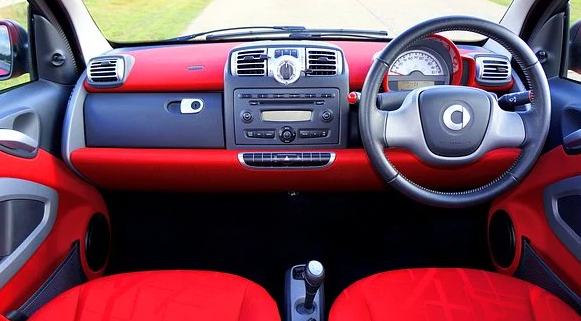Security frameworks
Engine vehicle robbery has been an issue since the beginning of the car age. The 1900 Leach auto highlighted a removable directing wheel that the driver could divert to forestall unapproved vehicle use. All the more as of late, modern electronic cautions, some of which consolidate radio signals, and more alter safe wiring and electronic locks have been delivered. Using remote innovation, vehicles outfitted with Global Positioning System (GPS) satellite route frameworks might be followed and recuperated when taken.
Wellbeing frameworks
From its beginnings the car presented genuine dangers to public security. Vehicle speed and weight gave an effect ability to tenants and people on foot that delivered extraordinary quantities of fatalities (13,000 out of 1920 in the United States alone and a lot more in Europe, just as numerous genuine wounds). During the twentieth century the paces of death and injury declined essentially as far as vehicle miles, yet, due to the expanded number of vehicles out and about, absolute fatalities declined just marginally. During 2005–10, in any case, fatalities declined by 25% for reasons that are not perceived. This descending pattern proceeded in the next decade. Most lethal mishaps happen on either city roads or auxiliary streets. New separated street plans are moderately more secure. Driver preparing, vehicle upkeep, parkway improvement, and law implementation were recognized as key regions answerable for further developing wellbeing, however the essential plan of the actual vehicle and the expansion of uncommon security highlights were huge components in overall decrease of deadly mishaps. Rates fluctuate from one country to another. Security highlights of cars go under two unmistakable headings: mishap evasion and tenant insurance.
Mishap Avoidance Systems
Mishap aversion frameworks are intended to assist the driver with keeping up with control of the vehicle. The double expert chamber stopping mechanism is a genuine model. This ensures the driver against abrupt loss of brake line pressure. Front and back brake lines are isolated so that on the off chance that one fizzles, the other will keep on working.
Ensuring Occupants
Frameworks for ensuring tenants in case of a mishap fall into four significant classes: support of traveler compartment respectability, tenant limitations, inside sway energy-safeguard frameworks, and outside sway energy safeguards. Insights demonstrate a far higher possibility for endurance among mishap casualties staying inside the traveler compartment. Traveler compartment respectability relies essentially upon the legitimate activity of the entryways, which should stay shut in case of a mishap and should be adequately secure to forestall interruption.
Entryway lock instruments have been intended to oppose forward, aft, and sideward powers and consolidate two-stage gets, with the goal that the hook might hold if the essential stage fizzles. Support radiates in entryways are intended to divert sway powers descending to the more unbending edge structure beneath the entryway. Powers are coordinated through built up entryway columns and pivots.
Inhabitant Restraints
Inhabitant limitations are utilized to assist with coupling the traveler to the vehicle. They license decelerating with the vehicle instead of free trip into the vehicle structure or into the air. A mix of lap and shoulder belts is the most well-known restriction framework. The belts comprise of web textures that are needed by guidelines in different nations to withstand 6,000-pound (2,700-kg) test stacking and are dashed to the vehicle underbody and rooftop rail. Catch type hook discharge instruments are accommodated clasps.
Uninvolved Restraints
A different line of designing improvement has fixated on inactive limitations that don’t need any activity by the inhabitant. Specifically, business air sacks were presented during the 1980s, and all new vehicles sold in the United States since 1998 (1999 for light trucks) have required both driver and front traveler air packs.
At the point when a vehicle outfitted with an air pack goes through a “hard” sway, generally more than 10 miles (16 km) each hour, an accident sensor conveys an electrical message that triggers a blast which produces nitrogen gas to expand air sacks situated in the controlling section, front dashboard, and potentially different areas. Air packs burst from their areas and expand to a situation among inhabitants and the vehicle structure in under one-10th of a second. The expanded air packs retain sway energy from inhabitants by driving gas out through a progression of ports or holes noticeable all around sack texture. Air sacks breakdown in around one second, along these lines permitting inhabitants to leave the vehicle.
It has been assessed that 46% of front-seat fatalities could be wiped out via air sacks when they are utilized related to lap or lap-and-shoulder belts. This is a 10 percent improvement over the utilization of lap and shoulder belt frameworks alone. The front-mounted air pack doesn’t give security in side or back crashes or in delayed effects from rollovers. Extra side-mounted air packs, be that as it may, give a proportion of insurance in side effects and are accessible in some vehicle models.
Inside Impact Energy-Absorbing Devices
Inside sway energy-engrossing gadgets increase limitation frameworks by retaining energy from the tenant while limiting wounds. The energy-engrossing guiding segment, presented in 1967, is a genuine illustration of such a gadget. Instrument boards, windshield glass, and different surfaces that might be struck by an excessive tenant might be intended to retain energy in a controlled way.
Outside Impact Energy-Absorbing Devices
Outside sway energy-engrossing gadgets incorporate the underlying components of the undercarriage and body, which might be custom-made to misshape in a controlled way to decelerate the vehicle all the more step by step and, subsequently, pass on less power to be capable by the tenants. Stress risers as area inconsistencies have been incorporated into front casing individuals from certain vehicles. These are intended to clasp under extreme loads and retain energy all the while.
